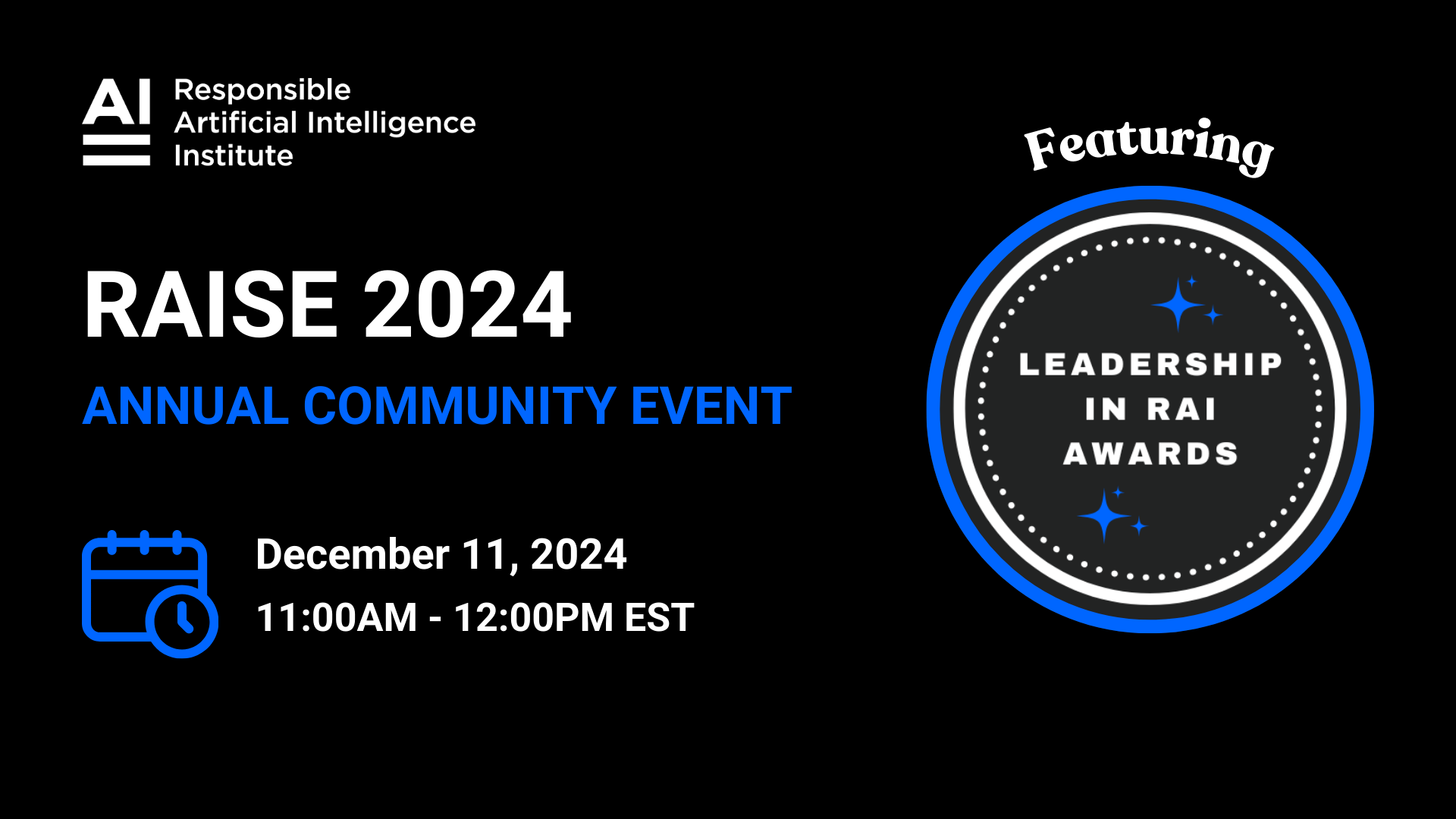RAISE 2024
Where Innovation Meets Responsibility
Annual Community Event & Awards
Panel Discussion
"The Convergence of Responsible AI & AI Governance"
As AI systems become increasingly integrated into our daily operations, the relationship between Responsible AI practices and AI governance frameworks is evolving rapidly. Join our distinguished panel of industry experts as they explore the critical intersection—and growing distinction—between RAI and AI governance. From regulatory compliance to ethical implementation, our panelists will unpack what “good” looks like in today’s complex AI landscape and examine why these once-unified approaches are now taking divergent paths. The discussion will offer practical insights into building resilient AI practices while navigating emerging regulations, standards, and governance frameworks.
Key Discussion Points:
- What “good” looks like in responsible AI implementation
- The emerging divergence between RAI and AI governance
- Practical strategies for building resilient AI practices
- Navigating the complex landscape of AI regulation and standards
- Balancing innovation with responsible development
- Implementation challenges and success stories
Panelists

Voting Opens December 2nd
During RAISE we will honor an extraordinary individual, organization, and initiative through our “Leadership in Responsible AI Awards.” Thank you for submitting your nominations. Nominations have closed. Voting will will run from December 2nd – 6th.





